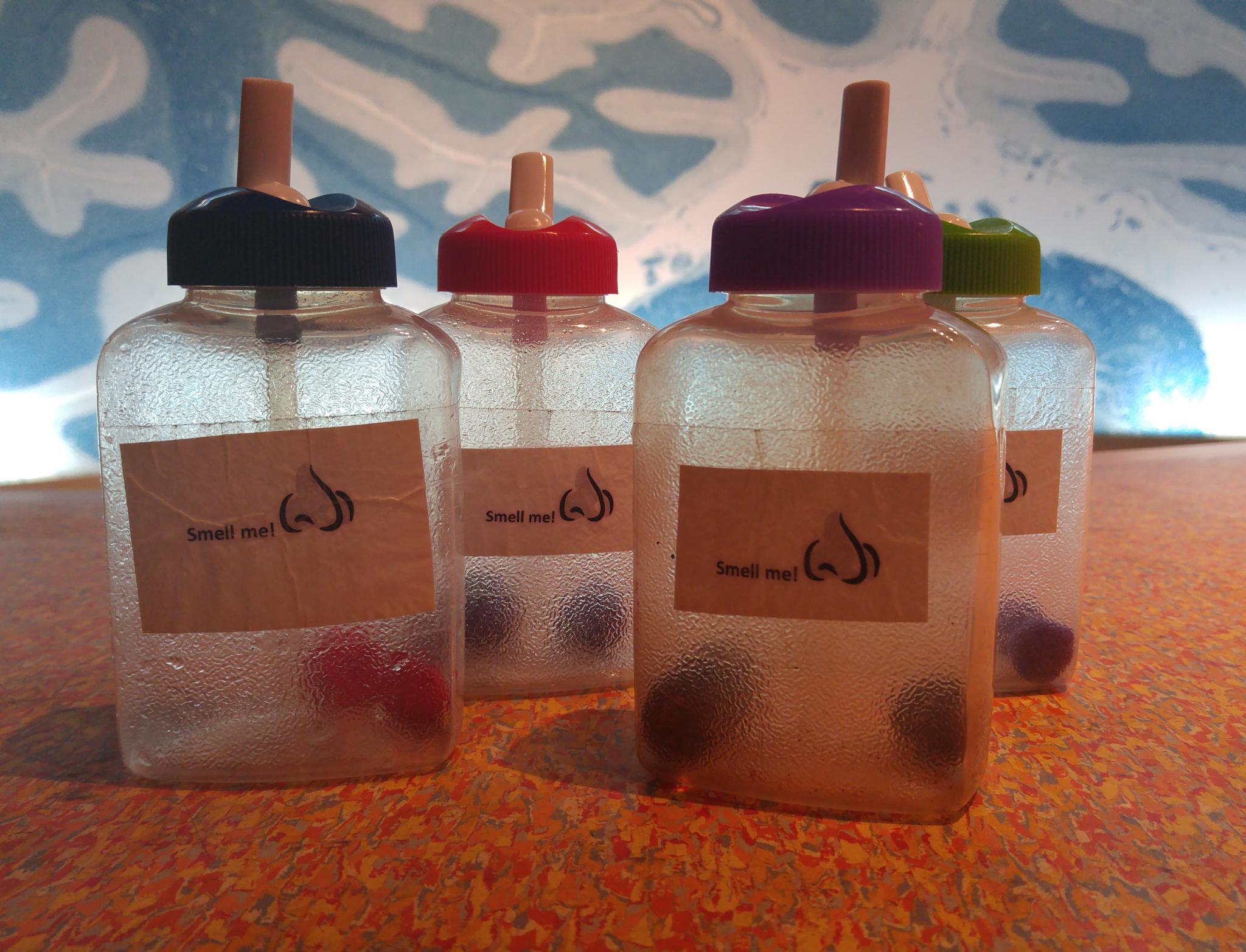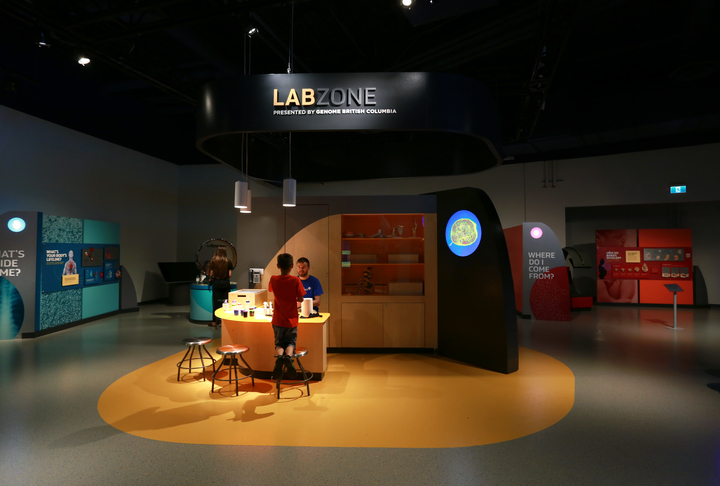Are you a smell expert?
In this activity, students try to identify substances using only their sense of smell. Sometimes the sense of smell can be fooled because humans do not get as full and complete a picture from smell as we do with vision.
What are smells?
What makes up the smell of something? Smells or odours are composed of tiny molecules of chemicals invisible to the human eye from things like food, flowers or poo. Many odours are not single scents or single kinds of molecules but a whole mixture of them. Everything you smell, therefore, gives off molecules. Those molecules are generally light, volatile (easy to evaporate) chemicals that float through the air into your nose.
How do we smell?
The sense of smell, called olfaction, involves the detection and perception of chemicals floating in the air. Chemical molecules enter the nose and dissolve in mucous within a membrane called the olfactory epithelium. In humans, the olfactory epithelium is located about 7 cm up and into the nose from the nostrils. The olfactory epithelium contains special receptors that are sensitive to odor molecules that travel through the air.
When the smell receptors are stimulated, signals travel along the olfactory nerve to the olfactory bulb. There the smells are recognized because each smell molecule fits into a nerve cell like a lock and key. The olfactory bulb is underneath the front of your brain just above the nasal cavity. Signals are sent from the olfactory bulb to other parts of the brain. The brain interprets the combination of receptors to recognize any one of about 10,000 different smells. Identifying smells is your brain's way of telling you about your environment.
In humans, there are about 40 million olfactory receptors; in the German Shepherd dog, there are about 2 billion olfactory receptors. That’s why dogs have a much better sense of smell than humans.
When you have a cold and your nose is stuffed up, you cannot smell very well. This is because the molecules that carry smell cannot reach the olfactory receptors. This is also why you cannot taste food properly when you have a cold. The ability to smell and taste go together because odours from food allows us to taste more fully.
How is smell related to memories and feelings?
Olfactory receptors are directly connected to the limbic system, the most ancient and primitive part of the brain, which is thought to be the basis of emotion. And so, smelling an odour consists not only of the sensation of the odour itself but of the experiences and emotions associated with these sensations. In this way, smelling certain odours can result in strong emotional reactions and trigger forgotten memories. Smell is better at this memory cue effect than any of the other senses.
How can smell keep us safe?
Your sense of smell also can help you keep safe. For example, it can warn you not to eat something that smells rotten or help you detect smoke before you see a fire.
What can we smell?
Even though humans can distinguish approximately 10,000 diverse scents. It is thought that we have seven primary odours that help us determine objects and/or our environment:
| Odour | Example |
| Camphoric | Mothballs |
| Musky | Perfume/aftershave |
| Floral | Roses |
| Peppermint | Mint gum |
| Etheral | Dry cleaning fluid |
| Pungent | Vinegar |
| Putrid | Rotten eggs |
How does the ability to smell vary?
Our smelling ability increases to reach a plateau at about the age of eight, and declines in old age. Women consistently outperform men on all tests of smelling ability.


